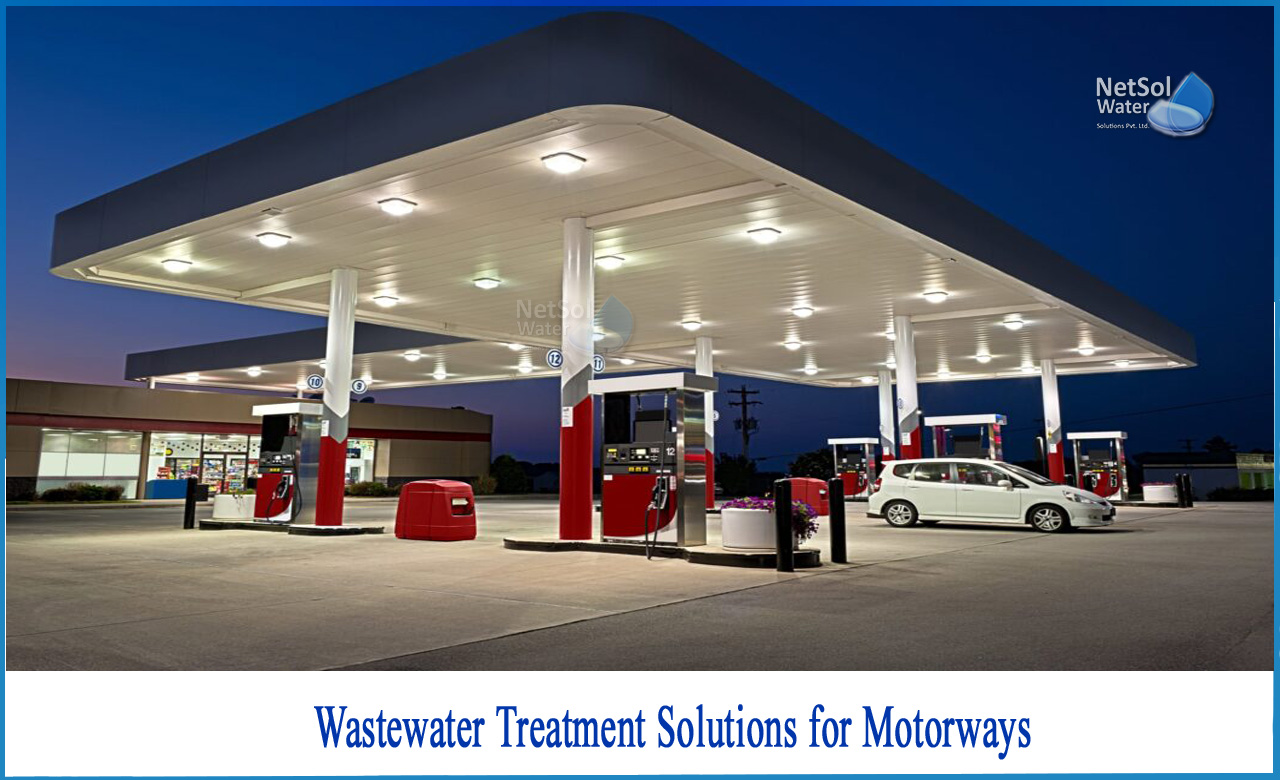How to Make Wastewater Treatment Solutions for Motorways?
Highway lengths have expanded dramatically in highly industrialised countries since the second part of the twentieth century, primarily to accommodate public transportation.
This raised the demand for road infrastructure equipment at motorway service areas (MSAs), which are “where sanitary facilities, catering, restaurants, rest areas, car washes, and gas stations” are located. Because MSAs are mostly in rural locations, far from city infrastructure, supplying them with tap water and disposing of their garbage is a major issue. In many circumstances, it is impossible to discharge wastewater to a central wastewater treatment plant, necessitating a site-specific solution to the problem.
The construction and operation of an on-site wastewater treatment facility is required!
Due to increased traffic, increased visitor numbers, or facility development, wastewater treatment units at motorway service stations are frequently undersized or overcrowded. Specific concerns with respect to ammonia and BOD compliance can occur. Because of the high amounts of oil and grease in the effluent, the COD might be exceedingly high. At a motorway service station, wastewater is produced by the use of kitchen, cleaning, and restroom facilities. Due to catering and food preparation, it has extremely fluctuating flows, a high ammonia concentration, and a high FOG level.
Motorway Service Station Wastewater Treatment processes
Screening, buffering, SBR, DAF, settlement, and sludge treatment, are all popular treatment methods for motorway service station wastewater.
1: Screening - Unit operations for the removal of floating and suspended solids from wastewater are included in the primary treatment. The first unit operation in a wastewater treatment plant is screening.
Coarse screening is used to remove bigger particles of floating and suspended materials. The opening of the screen might be round or rectangular. A rack is a screen that is made up of parallel bars or rods. The screens are used to prevent rags and big debris from damaging or clogging pumps, valves, pipelines, and other accessories.
2: Buffering – The goal is to achieve a consistent volume and, in some cases, a consistent quality. It's in place so that subsequent purifying operations can operate as efficiently as feasible. It's possible to have an in-line or off-line buffer. The full amount of wastewater passing through the buffer tank is used for in-line buffering.
3: Sequencing Batch Reactor - The sequencing batch reactor (SBR) is a wastewater treatment technology that uses a fill-and-draw activated sludge technique. In this system, wastewater is pumped into a single "batch" reactor, where it is treated to eliminate contaminants before being discharged. A single batch reactor can be used for equalisation, aeration, and clarifying. Two or more batch reactors are employed in a predetermined sequence of operations to improve the system's performance. Both municipal and industrial wastewater have been effectively treated using SBR systems. They're especially well-suited to wastewater treatment applications with low or intermittent flow rates.
4: Dissolved Air floatation - Total suspended solids (TSS), biochemical oxygen demand (BOD), and oils and greases (O&G) are all removed from a wastewater stream using DAF systems. Contaminants are eliminated by pumping air under pressure into a recycle stream of clarified DAF effluent to create a dissolved air-in-water solution.
5: Settlement - A sedimentation tank, also known as a settling tank or clarifier, is a component of a modern water or wastewater treatment system. A sedimentation tank allows suspended particles in water or wastewater to settle out as it passes slowly through the tank, giving some filtration.
6: Sludge Treatment - The techniques for managing and disposing of sewage sludge created during sewage treatment are referred to as sewage sludge treatment. Sludge treatment focuses on reducing sludge weight and volume to lower transportation and disposal costs, as well as lowering the health concerns associated with disposal choices. Weight and volume reduction are primarily performed by removing water, while pathogen eradication is frequently accomplished by heating during thermophilic digestion, composting, or cremation. The volume of sludge generated and the treatment costs required for accessible disposal alternatives are factors in deciding on a sludge treatment procedure.
What can Netsol Water offer?
Netsol Water is committed to providing our valued customers with hands-on service, expert counselling, and training. Every environmental problem and its management have a solution in us.
Netsol Water is Greater Noida-based leading water & wastewater treatment plant manufacturer. We are industry's most demanding company based on client review and work quality. We are known as best commercial RO plant manufacturers, industrial RO plant manufacturer, sewage treatment plant manufacturer, Water Softener Plant Manufacturers and effluent treatment plant manufacturers. Apart from this 24x7 customer support is our USP. Call on +91-9650608473, or write us at enquiry@netsolwater.com for any support, inquiry or product-purchase related query.



